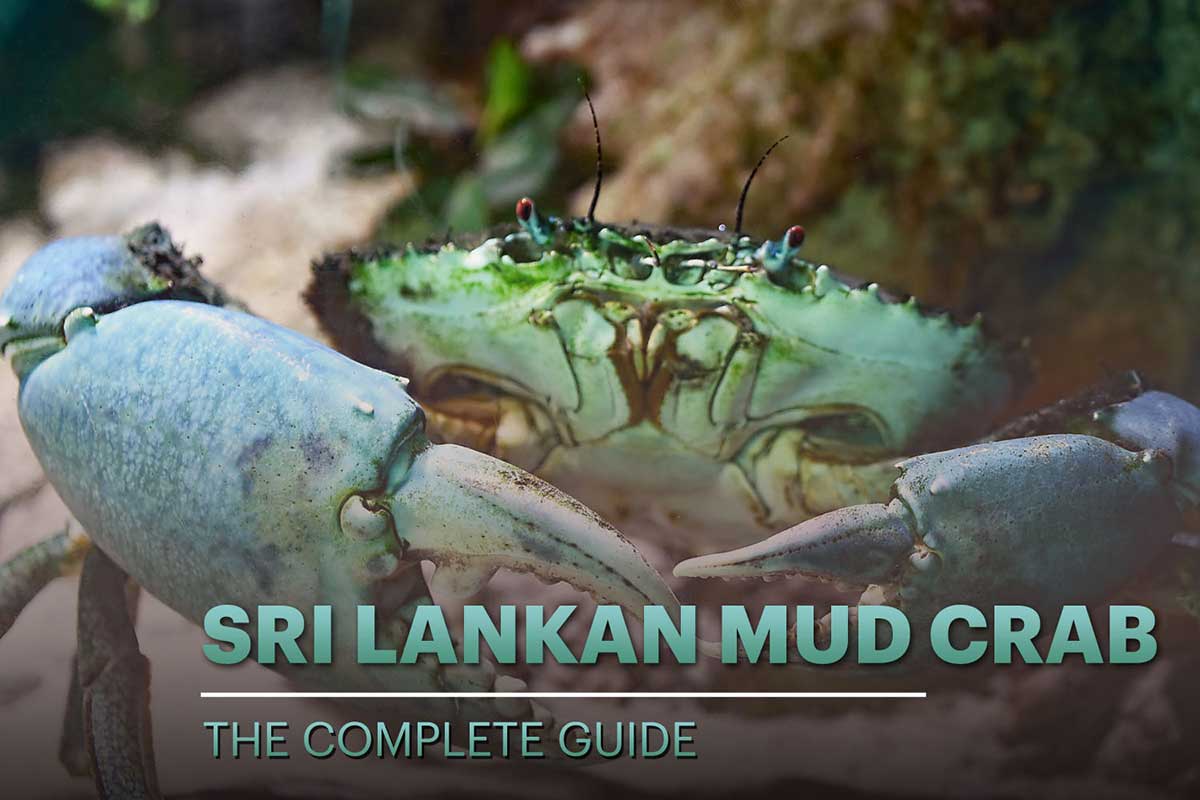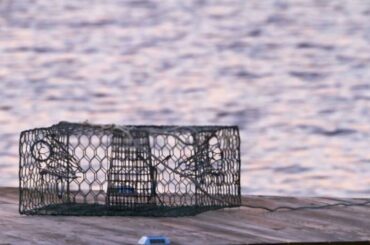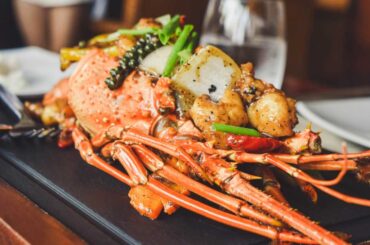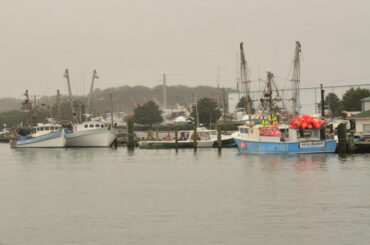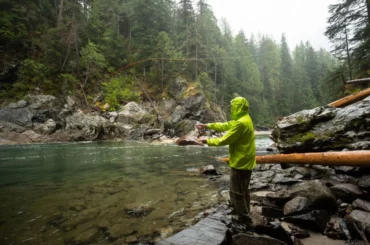Table of Contents

This article will explain to you about one of the most embracing seafood in Sri Lanka, The Sri Lankan Mud Crab. Its habitat, farming, nutrition, and so many factors will be in it.
If you have never heard of a mud crab, it might be either your region doesn’t produce them or not having good taste in food. Being one of the most delicious seafood, Sri Lankan mud crab is a name you need to hear of. Mud Crabs are economically important species that are living in lagoons in dry zones. They are important to mankind mainly as food. They are scientifically identified as Scylla Serata is also known as black crab. They live in Asia, Africa, and some of the Australian dry regions.
The Distribution of Mud Crabs
They are mostly identified in the Indo-Pacific region, where they find the most appropriate climatic factors for them. They prefer mostly wet surface and dry ecological factors. South Africa and the Sri Lankan lands have been found by these creatures for a living. Both countries share the same climatic factors along with partial wetlands. Lagoons, mud, and water are the most preferred nature features for mud crabs. Mangroves are also one of their most admired locations to spend living.
The temperature, food, and protection are optimum in these kinds of places. All the mentioned countries have these types of features on their lands.
However, they have developed significant features along with the huge range of spreading. Other than these two countries, Fiji, New Zealand, Japan, and Samoa are the other countries where Mud Crabs live. Because of the highly favored taste of these sea creatures, their distribution has been extended up to Florid and Hawaii islands as well.
Due to the demand from the market, US farmers have started to cultivate them on US soil, Florida. But, some countries have been blessed with some specially modified Crab varieties with special features. The Sri Lankan Mud Crab or the Lagoon Crab is one of them.
The Sri Lankan Green Crab Alias Lagoon Crab
Sri Lanka has got a decent piece of land in their Northern and southwest parts of the country. Jaffna, Negombo, Halawata, and Mannar are comparatively more popular areas for producing live and export-ready mud crabs. Some producers are really interested in having a higher price in the international crab market for these crabs. Therefore, they have dedicated special lands for these crabs and conduct special procedures to make something more expensive.
The same species has been developed into a giant Mud Crab due to the diverse climatic and genetic factors. Known as the Green Crb or the Lagoon Crab, what Sri Lanka produces is a giant crab species related to the Scylla Serata.
Why Is Sri Lankan Crab A Green Crab?
Indeed, there are four types of mud crabs in the world. All of them have been classified into four groups due to the color of the skin. Brown and green-colored crabs are the most spread species in the Scylla group. It is important to note that Scylla Serrata is green and the Scylla Olivacea is the brown-colored mud crab. What Sri Lanka has is Green Mud Crap. Although it is greenish from nature, it is not very much identical.
The name of each mud crab is just a reference to the environment they are used to identify. Since the lagoon environment is what they turn green, the Scylla seat is known as the Green Crab. In Sri Lanka, the same crab is identified as Greta Lagoon Crab or just the “Mada Kauluwa” in the local tongue.
What are the differences between the Sri Lankan Green crab and the Bron Crab?
It is not mainly about the color but the physical features they have. The Green crab/ Sri Lankan mud crab has got more than one sharp spine on its elbow. As a sign to show its aggression, this is a great example. When comparing to brown crab, Green Crabs or Sri Lankan mud crabs are more aggressive.
They tend to attack any kind of enemy in case of a barrier. Also, they have got the ability to cut down the finger of a human. When it comes to the Brown crab, it has got just a small and blunt spine on the elbow. Other than that, the Green crab has got greenish colored claws. That is one o the spots to observe the green color naturally as well.
Sri Lankan Mud Crab has longer lobes than the brown crab between the eys. Being one of the most prominent characters, the Sri Lankan mud crab can walk faster than the brown crab. The long legs are the main reason for that.
The taste of the Sri Lankan Mud crab has got a high demand in the market. They taste milky and delicious. When it comes to all the mud crabs in the world, Sri Lankan crabs, and the taste is prominent. The large-size crabs are always a sign of the Sri Lankan mud crab brand, while the others cannot be grown into as large as Sri Lankan lagoon crab.
Life Cycle of Sri Lankan Mud Crab

Sri Lankan Mud crabs have the same life cycle that all other mud crab species have. But, the size is the only factor that differs from the other crab species. They have a complete life cycle. Crabs have to spend 06 stages in their life cycle to become a grown mud crab.
Zoea
A mud crab starts its life as a larva known as Zoea. They spend the shortest time in the life cycle floating on water. They are 2mm long in this stage. Small Zoeas depend on small plants and microorganisms that dive in the water. These small creatures have not developed any limb-like organism as well. A zoea has to molt four times to become a Megalpa, the next stage of a mud crab.
Megalopa
A Megalopa is produced at the end of the 14th day of a Zoea. As the fifth molt, a Megalopa is born as the second stage of the life cycle. It has got a functional and slightly visible claw that can find some food. After a week or ten days, the Megalopa moves into the lagoon bed. Even if it is a sheltered place, it chooses to stay. Then it does the 5th molt and becomes a juvenile crab, the next stage of the life cycle.
Juvenile Crab
The identical crab is produced in this stage. The miniature version of the crab is produced as a juvenile crab. It has got all the body parts a grown Sri Lankan Mud crab needs to have. The comparison of the crab among others may suggest that this one is larger than all the species. It grows up to 25mm in length, which the other species have a length from 10 to 20mm. The juvenile crab moves into a sheltered place if the Megalpoa has settled in the bed of a reservoir.
Young Adults
Young adults grow up to 20-24 months of age. Although the maximum length may vary from one species to another, the Greenish Sri Lankan Crab is considered to be the longest crab with 12cm at this stage. Other species have got an average length of 10cm in the young adult stage. During this stage, they mature until they are capable of mating. Therefore, the gain of food is becoming one o their concerns. Small fish, microorganisms, planktons, and small fungal are their food.
Mating Stage
They have to spend at least 12 months in the young adult stage to become maters. Also, the climate has to be warm.l Since they prefer to stay in lagoons and warm water logging areas that will not be a much concerning factor. When it comes to the marting process, females secrete a special pheromone into the water, indicating they are ready for the mating process. Male Sri Lankan crabs find these chemicals and go for mating with the females.
The mating happens as the male Sri Lankan mud crabs mount on the females and stay for a couple of days. The duration may be extended if the molt doesn’t happen. After the female crab removes its shell, the male crab changes the position and does the mating. The male crab inserts a capsule of sperm into the female crab’s reproductive opening. It is being stored there until the female crab develops ovule. The development of the ova or the ovule ends after being fertilized with the deposited sperm capsule.
Even after the mating process ended, the male crab holds the female one from its legs until the female crab’s shell gets thick. It is done as the natural enemies can easily harm the female crab after mating.
Hatching Stage
Typical Mud Crabs travel up to 50km for hatching. When it comes to Sri Lankan Mud crabs, they just have to travel up to a couple of kilometers. All they have to find is the end of the lagoon banks. The depth they have to dive is not more than a couple of meters for the hatching. That is somewhat an easy task when compared to other mud crabs in the world. It has been found that a Brown Mud Crab has to dive up to 30m and swim more than 50km for hatching.
Sri Lankan Mud crabs or lagoon crabs dig a hole in the mud where small larvae can get protection. Usually, 2-5 million fertilized eggs are released into the hole as batches. Females use their swimming legs to carry these huge amounts of eggs under the bellies.
The hatching process takes place up to 4 weeks until the eggs are broken, and the larvae come out of the eggs. Sri Lankan Mud crab helps them to move easily by moving its abdomen. After the larvae come out of the mud hole, the life cycle of Sri Lankan Mud Crab keeps happening.
Catching of Sri Lankan Mud Crabs
Catching of the crabs is conducted in a couple of ways. Whatever the method used for catching, the safety of the crab should be ensured. The two ways of catching crab are, using nets and buckets. It is important to note that the crabs contain specific characteristics such as aggression and their strong claws.
Nets
As the conventional method of catching crabs, nets are used by the farmers. There is not a specific type or the size of the holes of nets for that. The nets used to catch prawns are used to catch the crabs. Most of the prawn farming grounds are used for farming crabs. Therefore, prawn nets have come into use. Since Sri Lankan Mud Crab is known for its strong claws, medium and small types of crabs are favored by this method.
Crab Traps- Buckets
Crab Traps Buckets are crucial for catching large mud crabs. Crabs are graded as large and extra-large crabs using their weight. Usually, the large crab margin begins from 750g, which is used as a measure to catch the crabs. If the majority of the large crabs are high in number, buckets will be used by the farmers.
There are two types of buckets used to catch crabs, cane buckets and metal buckets. Since the cane buckets can easily be harmed by the crabs, the metal buckets have come into the majority’s use.
Packing of Mud Crabs
Crabs are usually aggressive sea creatures. Their aggressive behavior should be stopped as a top priority. Crabs’ claws are tied using cloth wrappings without causing any damage to their bodies. After that, they are packed horizontally in the box. Since their claws are tied, crabs can be packed densely.
According to the length of the time, they need to be kept alive, the ventilation and the temperature have to be controlled. Holes are made in wooden or rigifoam boxes that are used to transport the Sri Lankan Mud Crabs. They will be useful if crabs die while transporting as well. If the temperature is needed to control, Khomba leaves will be applied as a layer on the transporting boxes. Because the crabs are sensitive to ice and they may die, ice is not used for live crab transportation purposes.

Transportation of Mud Crabs
It is important to determine the destination of the crabs as they cannot survive more than three days. If the packed crabs are for the local market, that will not be a problem as they can be delivered to markets within few hours. Since the Colombo and the Down South Market places are within a 200-mile range, it is just a matter of few hours when getting there.
As the main and the best price giver for the Sri Lankan Mud Crab, Singapore is the longest destination for crabs. Crabs can be delivered to the destination within 24 hours. Although the documentation part and the Airfreight clearance like activities involve, crabs can be delivered to Singapore within the mentioned time duration. Because the mud crabs can survive up to 3 days in the transportation process, that will not be a problem at all.
How The Pricing Happens
As one of the largest and the delicious mud crab species in the world, they can have the highest price in the world crab market as well. The price of the Sri Lankan Mud crab is labeled according to the size of the mud crabs. As the only criteria to label them, the size matters all the time. There are 04 sizes for the crabs that receive according to their body weight. They are Small, Medium, Large, and Extra Large.
- Small – 350 – 500g
- Medium – 500 – 750g
- Large 750g – 1kg
- Extra Large – More than 1kg
How Sri Lankan Mud Crab Farming Happens
Sri Lankan mud crab farming happens in Jaffna, Halawata, and Mannar areas. Farmers target Singapore as the major exporter who has a mud crab demand of 3,300,000 kilograms per year. When it comes to the competition, South Africa, Australia, and Fiji are a few of the competitions they have. The large size and the deliciousness factors are always going in favor of Sri Lankan mud crab farmers.
When does the farming takes place?
Farming takes place when the young crabs have emerged from the water. They are taken into the farming system where the necessary protection and favorable factors are maintained. Food has to be provided if the mud crabs lack them. Since Sri Lankan lagoons are rich in food sources, some special parts are considered to plant them.
After the maturity and the sizes are available for the picking, mud crabs are picked. Their hardened shell is removed as the demand is higher for the crabs that contain a softshell. After the second week from the shell removal, Sri Lankan mud crabs are used to pick. Since the grading is conducted according to the weight, it is essential to wait until the crabs become to the maturity stage.
Hand-picking tools are used carefully as they can harm the Sri Lankan Mud crabs without a hardened shell. They are stored in Regifome boxes with holes where they can survive until they reach Singapore. Also, it is important to remember that the packing should take place in a careful and calm environment as the grip of the Sri Lankan Mud Crab is more dangerous than any other crab species on earth.
FAQ
Is there a special taste according to gender?
Nope. There is not a specific taste for a male or a female Sri Lankan mud crab. But, it matters when the female crab has eggs on its body. People love them to eat along with the chilly sauce. Also, the larger claws are available for the male crabs. All it matters is having the hardened shell removed before the picking takes place if you only mind the state of Sri Lankan crab flesh.
What are the nutrients that can get from Sri Lankan Mud Crab?
Similar to other crabs, Sri Lankan Mud crab is a rich vitamin Source. Other than that, it contains omega-three fatty acids, which are good for heart health. Calcium, Magnesium, Zinc, and Copper, like micronutrients, provide the necessary nutrition per intake.
Why is it better for the crabs without the hard shell?
The main reason is the improved taste. A Sri Lankan Crab without its shell is tastier than a live crab with a shell. Besides, a customer has to pay a higher price for the weight. Therefore, you must choose a crab without its shell.
What is the best way to kill a live Sri Lankan Mud Crab?
The best way is to put it in a freezer for one hour, which kills the crab for sure. Cooking the crab alive is not a recommended thing as it may add some secretion into the cooking mixture while dieing.
Is there a risk of containing harmful bacteria in a crab?
That depends according to the type of product you are about to purchase. As you know, Sri Lankan Mud Crabs live in Lagoons, and that’s why they are called mud carbs as well. The places they live can be home to toxins or hazardous microorganisms, including bacteria. Therefore, it is always better to buy these products from a trusted exporter.
Is a male or female Mud crab better to eat?
Both are great, And meat tastes equally delicious. Males are larger than females and therefore have more meat than females.

